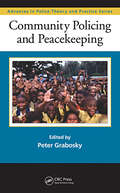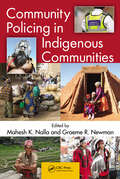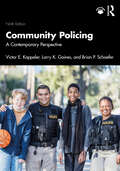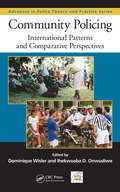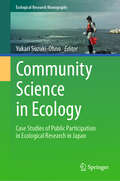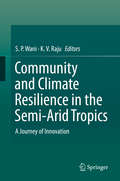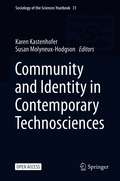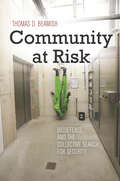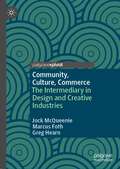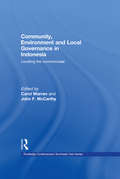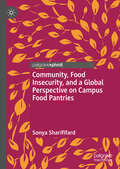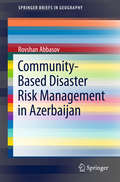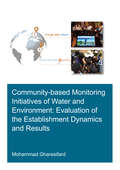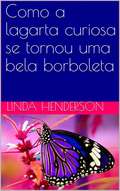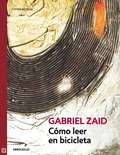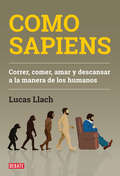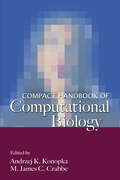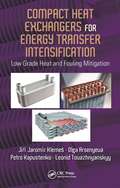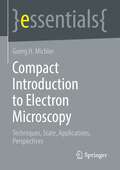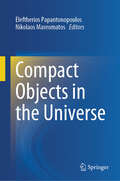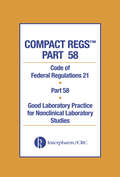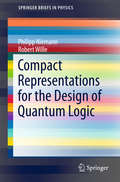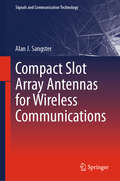- Table View
- List View
Community Policing and Peacekeeping (Advances in Police Theory and Practice)
by Peter GraboskyIn modern industrial societies, the demand for policing services frequently exceeds the current and foreseeable availability of public policing resources. Conversely, developing nations often suffer from an inability to provide a basic level of security for their citizens. Community Policing and Peacekeeping offers a fresh overview of the challenge
Community Policing in Indigenous Communities
by Mahesh K. Nalla Graeme R. NewmanIndigenous communities are typically those that challenge the laws of the nation states of which they have become often very reluctantly a part. Around the world, community policing has emerged in many of these regions as a product of their physical environments and cultures. Through a series of case studies, Community Policing in Indigenous Commun
Community Policing: A Contemporary Perspective
by Victor E. Kappeler Larry K. Gaines Brian P. SchaeferThis book provides comprehensive coverage of community policing, the philosophy and organizational strategy that expands the traditional police mandate of fighting crime to include forming partnerships with citizenry that endorse mutual support and participation. The first textbook of its kind, Community Policing delineates this progressive approach, combining the accrued wisdom and experience of its established authors with the latest research-based insights to help students apply what is on the page to the world beyond.The book extends the road map presented by Robert Trojanowicz, the father of community policing, and brings it into contemporary focus. The text has been revised throughout to include the most current developments in the field, including discussions of the 2020 protests and subsequent calls for police reform, and the rapid development of alternative responses for behavioral health and other non-criminal 911 calls. “Spotlight on Community Policing Practice” features throughout the text focus on real-life community policing programs in various cities as well as problem-solving case studies. Also assisting the reader in understanding the material are Learning Objectives, Key Terms, and Discussion Questions, in addition to numerous links to resources outside the text.An excellent resource for any undergraduate policing or law enforcement curriculum, this textbook is also suitable for introducing graduate students to the principles of community policing.
Community Policing: International Patterns and Comparative Perspectives (Advances in Police Theory and Practice)
by Dominique Wisler Ihekwoaba D. OnwudiweCommunity-oriented policing (COP) is the ideology and policy model espoused in the mission statements of nearly all policing forces throughout the world. However, the COP philosophy is interpreted differently by different countries and police forces, resulting in practices that may in fact run far afield of the community-based themes of partnership
Community Science in Ecology: Case Studies of Public Participation in Ecological Research in Japan (Ecological Research Monographs)
by Yukari Suzuki-OhnoThis book introduces community science (or citizen science) projects in Japan with a focus on ecology. Environments and ecosystems that have been slowly built up over time are changing and collapsing dramatically. In this rapidly changing environment, ecologists need to collaborate with volunteers in their research and activities to investigate and conserve a vast area. This book aims to guide ecologists in the practice of community science. The authors, who are leading ecologists and practitioners of community science projects, share their methods and lessons learned from practice. The book begins with the definition of community science and the following chapters introduce monitoring in ecological community science, using various methods such as observation, specimens, photographs, videos, sounds, and environmental DNA. Readers can learn about the advantages and disadvantages of these methods in ecological community science monitoring. The book also coverstopics such as scientific communication, data obtained from ecological community science monitoring, the rights of participants, decision-making in community science, and conservation activities with volunteers such as invasive alien species extermination and nature restoration. This book serves as a valuable resource for readers interested in ecological community science and its practice. The book is suitable for both undergraduate students and researchers as well as practitioners.
Community and Climate Resilience in the Semi-Arid Tropics: A Journey of Innovation
by K. V. Raju S. P. WaniThis book focuses on developing an integrated holistic approach for harnessing the potential of rain-fed agriculture. In this approach, rainwater management through harvesting and recharging the groundwater is used as an entry point activity for increasing the productivity for farmers through enhanced water use efficiency. To provide the holistic and integrated solutions, the approach of consortium through building partnerships with different stakeholders, eg. different research institutions (State, National and International), development departments, eg. Department of Agriculture, Department of Animal Husbandry etc., Non-Government Organizations (NGOs), Farmers Organizations Community-based Organizations (CBOs) along with market linkages through private companies.
Community and Identity in Contemporary Technosciences (Sociology of the Sciences Yearbook #31)
by Karen Kastenhofer Susan Molyneux-HodgsonThis open access edited book provides new thinking on scientific identity formation. It thoroughly interrogates the concepts of community and identity, including both historical and contemporaneous analyses of several scientific fields. Chapters examine whether, and how, today’s scientific identities and communities are subject to fundamental changes, reacting to tangible shifts in research funding as well as more intangible transformations in our society’s understanding and expectations of technoscience. In so doing, this book reinvigorates the concept of scientific community. Readers will discover empirical analyses of newly emerging fields such as synthetic biology, systems biology and nanotechnology, and accounts of the evolution of theoretical conceptions of scientific identity and community. With inspiring examples of technoscientific identity work and community constellations, along with thought-provoking hypotheses and discussion, the work has a broad appeal. Those involved in science governance will benefit particularly from this book, and it has much to offer those in scholarly fields including sociology of science, science studies, philosophy of science and history of science, as well as teachers of science and scientists themselves.
Community and Public Health Nursing: Evidence for Practice (Second Edition)
by Gail A. Harkness Rosanna DeMarcoOffering a greater emphasis on evidence-based practice than any other book for the course, Community and Public Health Nursing, 2nd Edition, demonstrates best practices in the field and helps students develop the abstract critical thinking skills and complex reasoning abilities they need to make connections between data and practice decisions. Succinct, manageable, and logically organized, the Second Edition focuses on the individual in the context of the community setting and on the global community, reflecting increasingly global healthcare concerns. To help students develop the clinical judgment they will need in their future careers, the book includes an exceptional array of case-based activities. Case studies in every chapter focus on regional, national, and international community settings and are supported by online answers, discussion questions, and reflective journaling assignments. In addition, five unique, interactive online case studies complement each Part in the text. Finally, the expanded and visually enhanced Adam,,s County online resource includes case-based questions, activities, critical thinking assignments, and%new to this edition%suggested answers. The Second Edition features an increased focus on non-communicable diseases as a global trend, enhanced content on program evaluation, new examples, and a wide range of online teaching and learning resources to save you time and help your students succeed.
Community at Risk: Biodefense and the Collective Search for Security
by Thomas D. BeamishIn 2001, following the events of September 11 and the Anthrax attacks, the United States government began an aggressive campaign to secure the nation against biological catastrophe. Its agenda included building National Biocontainment Laboratories (NBLs), secure facilities intended for research on biodefense applications, at participating universities around the country. In Community at Risk, Thomas D. Beamish examines the civic response to local universities' plans to develop NBLs in three communities: Roxbury, MA; Davis, CA; and Galveston, TX. At a time when the country's anxiety over its security had peaked, reactions to the biolabs ranged from vocal public opposition to acceptance and embrace. He argues that these divergent responses can be accounted for by the civic conventions, relations, and virtues specific to each locale. Together, these elements clustered, providing a foundation for public dialogue. In contrast to conventional micro- and macro-level accounts of how risk is perceived and managed, Beamish's analysis of each case reveals the pivotal role played by meso-level contexts and political dynamics. Community at Risk provides a new framework for understanding risk disputes and their prevalence in American civic life.
Community, Culture, Commerce: The Intermediary in Design and Creative Industries
by Marcus Foth Greg Hearn Jock McQueenieAs digital environments become increasingly individualised, instant, ubiquitous, and disintermediated, this book demonstrates the continuing relevance of intermediaries at the intersection of design, creativity, community engagement, and corporate social responsibility. The authors examine intermediaries as enablers of mutual benefit and offer a proactive, interventionist, and holistic approach to intermediation practice that steps beyond design thinking. By means of case studies that employ the 3C project design methodology—Community, Culture, Commerce—the authors provide an accessible introduction to intermediation at the nexus of theory and practice and signpost new opportunities for researchers and practitioners in the post-COVID environment.
Community, Environment and Local Governance in Indonesia: Locating the commonweal (Routledge Contemporary Southeast Asia Series)
by Carol Warren John F. McCarthyThis book explores the forces reconfiguring local resource governance in Indonesia since 1998, drawing together original field research undertaken in a decade of dramatic political change. Case studies from across Indonesia’s diverse cultural and ecological landscapes focus on the most significant resource sectors – agriculture, fisheries, forestry, mining and tourism –providing a rare in-depth view of the dynamics shaping social and environmental outcomes in these varied contexts. Debates surrounding the ‘tragedy of the commons’ and environmental governance have focused on institutional considerations of how to craft resource management arrangements in order to further the policy objectives of economic efficiency, social equity and environmental sustainability. The studies in this volume reveal the complexity of resource security issues affecting local communities and user groups in Indonesia as they engage with wider institutional frameworks in a context driven simultaneously by decentralizing and globalizing forces. Through ground up investigations of how local groups with different cultural backgrounds and resource bases are responding to the greater autonomy afforded by Indonesia’s new political constellation, the authors appraise the prospects for rearticulating governance regimes toward a more equitable and sustainable ’commonweal’. This volume offers valuable insights into questions of import to scholars as well as policy-makers concerned with decentralized governance and sustainable resource management.
Community, Food Insecurity, and a Global Perspective on Campus Food Pantries
by Sonya SharififardThis book explores food accessibility and its relationship to food security in communities representing high populations of college and university students. Each chapter offers readers a vivid and multifaceted perspective on food practices' cultural and social complexities and the current food system. Using insights from the multidisciplinary fields of food studies, educational leadership, and human geography, this book engages the global paradoxes of food. Food is individual and community-based, and students participating in school activities and extracurriculars must often choose between affording books or food. Each chapter begins with a case study and ends with suggested resources and activities. Chapter topics include academic success, identity and belonging, groceries, food media, public health, marketing, surplus and scarcity, and social impact. The book further blends concepts and empirical accounts to address the central issues of culture, structure, and accessibility within and among the food retail environment.
Community-Based Disaster Risk Management in Azerbaijan (SpringerBriefs in Geography)
by Rovshan AbbasovThis book illustrates the main factors of vulnerability and gives a clear picture about the possible interventions to reduce disaster risks both in schools and communities in Azerbaijan. A new methodology for child centered vulnerability assessments both on school and community levels has been developed. This methodology can be used to assess the level of vulnerability of schools and communities. The book is a newly prepared training manual which will help practitioners conduct trainings for government and community organizations. While the book is focused on a specific region, the suggested approach is generic and can be used elsewhere.
Community-Based Monitoring Initiatives of Water and Environment: Evaluation of Establishment Dynamics and Results (IHE Delft PhD Thesis Series)
by Mohammad GharesifardCitizen participation in water and environmental management via community-based monitoring (CBM) has been praised for the potential to facilitate better informed, more inclusive, transparent, and representative decision making. However, methodological and empirical research trying to conceptualize and evaluate the dynamics at play that might enable or hinder these initiatives from delivering on their potential is limited. This research contributed to the conceptualization of CBMs through development of a conceptual framework that is suitable for Context analysis, Process evaluation and Impact assessment of CBMs – the CPI Framework. This conceptualization provides an interpretation of what 'community' means in the context of a CBM initiative. In addition, this research contributed to the existing empirical knowledge about the establishment, functioning and outcomes of CBMs by testing the CPI Framework for studying two real life CBMs throughout the lifetime of an EU-funded project - the Ground Truth 2.0. The first CBM is called Grip op Water Altena that focuses on the issue of pluvial floods in 'Land van Heusden en Altena' of the Netherlands. The second CBM is Maasai Mara Citizen Observatory and aims at contributing to a better balance between biodiversity conservation and sustainable livelihood management in the Mara ecosystem in Kenya.
Como a lagarta curiosa se tornou uma bela borboleta
by Linda HendersonEsta história ensina crianças sobre a incrível transformação que ocorre quando uma lagarta se torna numa borboleta. Explica passo a passo num nível que as crianças podem entender como acontece. Se gostaria de explicar aos seus filhos de onde vêm as borboletas, esse recurso útil ajudará a fazê-lo. Também relaciona aspectos espirituais de como uma nova vida e transformação estão disponíveis para os crentes em Cristo.
Como leer en bicicleta
by Gabriel ZaidEste es un libro alegre, juguetón, por momentos soberbiamente irresponsable, que tiene la capacidad, más bien infrecuente en la literatura de nuestros días, de excitar la inteligencia y provocar carcajadas al mismo tiempo. Zaid ha conseguido sortear los lugares comunes del artículo cultural corriente, y sus ensayos son sistemáticamente anticonvencionales. Otra virtud que tiene el uso irresponsable (es decir, lúdico) del saber científico en materia de literatura (aparte de producir textos brillantes y divertidos) es que proporciona una especie de alivio. A quienes creen que en esta era de computadoras y robots inteligentísimos la literatura puede desaparecer como quehacer humano al recibir el impacto de la ciencia, los ensayos de Zaid les demuestran que no hay nada que temer. Si la colisión se produce, al menos en este caso, es el supuesto Frankenstein el que se desintegra al tocar la mariposa, es la ciencia la que se vuelve poesía. Mario Vargas Llosa
Como sapiens: Correr, comer, amar y descansar a la manera de los humanos
by Lucas LlachEl conflicto entre nuestros instintos y cuerpo de Homo sapiens y la vida que llevamos es cada vez mayor. ¿Qué humanidad estamos construyendo? Nuestra especie no era la única ni la más prometedora de las varias versiones de humanos en el planeta hace 200.000 años. Pero lo conquistó. Salió de su cuna en África y ocupó todos los continentes. Seleccionó y rediseñó al puñado de animales y vegetales de los que se alimenta. Se multiplicó una y mil veces. Hizo pueblos, ciudades, imperios, guerras, transportes, fábricas e ideas, muchas ideas. El Homo sapiens de hoy es el mismo animal, pero se mueve menos, come peor, trabaja más y tiene menos sexo que sus tatarabuelos africanos. Padece ese desfasaje a cambio de mortalidad baja y pobreza en descenso. Sigue triunfando en su primacía sobre el resto de las especies, pero lo pueden desafiar seriamente una pandemia o una crisis ecológica, o los cambios en su propio cuerpo a medida que la medicina apaga la selección natural y la ingeniería genética imagina humanos de diseño. A prudente distancia de la corrección política y con una dosis importante de humor, este ensayo -que es también crónica- repasa los hallazgos de los últimos años sobre la evolución humana e invita a pensar cómo queremos vivir de ahora en adelante. "Que una especie intente desactivar los mecanismos de la selección natural que operan sobre sí misma, y lo logre casi por completo, es inédito, y ya está redefiniendo al Homo sapiens [...] El ser humano se va convirtiendo gradualmente en Homo medicus, una especie mucho más diversa, formada por descendientes de Homo sapiens que van acumulando variaciones genéticas, útiles o no. Gracias a la medicina, los Homo medicus pueden sobrevivir a los errores de copia, y a su vez necesitan cada vez más de la medicina para que emparche lo que ya no limpia de manera más eficaz y mucho más cruel la selección natural. [...] Pero también es cierto que podemos tratar de moderar esos desequilibrios entre lo que somos y la vida que llevamos. Vivir como sapiens no es volver a ningún tiempo ni lugar específicos. Es tratar de ser conscientes de que somos Homo sapiens (casi iguales, biológicamente, a los de hace cien siglos) nacidos en una cultura para la que el Homo sapiens no está preparado".
Compact Handbook of Computational Biology
by M. James C. Crabbe Andrzej K. KonopkaWritten by a dynamic team of highly regarded and experienced scientists, many of whom pioneered current methodologies in computer-assisted research in the life sciences, this interdisciplinary handbook covers terminology, software, and applications of computational biology with academic-level precision. It provides clearly written yet authoritative descriptions of methods and practical examples of their use supported by 975 scholarly works cited. Highlights include methods for pragmatic analysis of nucleic acid and protein sequences and structures, definition and detection of motifs in nucleic acid and protein sequences, protein structure prediction, and discrete modeling of biopolymers.
Compact Heat Exchangers for Energy Transfer Intensification: Low Grade Heat and Fouling Mitigation
by Olga Arsenyeva Jiri Jaromir Klemes Petro Kapustenko Leonid TovazhnyanskyyCompact Heat Exchangers for Energy Transfer Intensification: Low-Grade Heat and Fouling Mitigation provides theoretical and experimental background on heat transfer intensification in modern heat exchangers. Emphasizing applications in complex heat recovery systems for the process industries, this book:Covers various issues related to low-grade hea
Compact Introduction to Electron Microscopy: Techniques, State, Applications, Perspectives (essentials)
by Goerg H. MichlerGoerg Michler summarizes the large field of electron microscopy and clearly presents the different techniques. The author clearly describes the possible applications of microscopy and the requirements for specimen preparation. He illustrates the descriptions with picture examples from practice.The Author:Prof. Dr. rer. nat. habil. Goerg H. Michler was head of the Institute for Materials Science at Martin Luther University Halle-Wittenberg, is honorary chairman of the Institute for Polymer Materials e.V. and chairman of the Heinz Bethge Foundation for Applied Electron Microscopy.
Compact Objects in the Universe
by Eleftherios Papantonopoulos Nikolaos MavromatosThe main objective of this volume is to discuss the physical properties, observational signals and various probes of compact objects in the Universe. These include black holes, neutron stars, and exotic objects studied in alternative theories of gravity. The text is mainly addressed to postgraduate students and young researchers with the aim of introducing them to these very challenging topics.
Compact Regs Part 58: CFR 21 Part 58 Good Laboratory Practice for Non-clinical Laboratory Studies 10 Pack, Second Edition
by Interpharm CrcThis publication contains a verbatim reproduction of 21 CFR Part 58 Good Laboratory Practice for Nonclinical Laboratory Studies.
Compact Representations for the Design of Quantum Logic (SpringerBriefs in Physics)
by Robert Wille Philipp NiemannThis book discusses modern approaches and challenges of computer-aided design (CAD) of quantum circuits with a view to providing compact representations of quantum functionality. Focusing on the issue of quantum functionality, it presents Quantum Multiple-Valued Decision Diagrams (QMDDs - a means of compactly and efficiently representing and manipulating quantum logic. For future quantum computers, going well beyond the size of present-day prototypes, the manual design of quantum circuits that realize a given (quantum) functionality on these devices is no longer an option. In order to keep up with the technological advances, methods need to be provided which, similar to the design and synthesis of conventional circuits, automatically generate a circuit description of the desired functionality. To this end, an efficient representation of the desired quantum functionality is of the essence. While straightforward representations are restricted due to their (exponentially) large matrix descriptions and other decision diagram-like structures for quantum logic suffer from not comprehensively supporting typical characteristics, QMDDs employ a decomposition scheme that more naturally models quantum systems. As a result, QMDDs explicitly support quantum-mechanical effects like phase shifts and are able to take more advantage of corresponding redundancies, thereby allowing a very compact representation of relevant quantum functionality composed of dozens of qubits. This provides the basis for the development of sophisticated design methods as shown for quantum circuit synthesis and verification.
Compact Slot Array Antennas for Wireless Communications (Signals and Communication Technology)
by Alan J. SangsterThis book describes and provides design guidelines for antennas that achieve compactness by using the slot radiator as the fundamental building block within a periodic array, rather than a phased array. It provides the basic electromagnetic tools required to design and analyse these novel antennas, with sample calculations where relevant. The book presents a focused introduction and valuable insights into the relevant antenna technology, together with an overview of the main directions in the evolving technology of compact planar arrays. While the book discusses the historical evolution of compact array antennas, its main focus is on summarising the extensive body of literature on compact antennas. With regard to the now ubiquitous slot radiator, it seeks to demonstrate how, despite significant antenna size reductions that at times even seem to defy the laws of physics, desirable radiation pattern properties can be preserved. This is supported by an examination of recent advances in frequency selective surfaces and in metamaterials, which can, if handled correctly, be used to facilitate physics-defying designs. The book offers a valuable source of information for communication systems and antenna design engineers, especially thanks to its overview of trends in compact planar arrays, yet will also be of interest to students and researchers, as it provides a focused introduction and insights into this highly relevant antenna technology.
Compact Star Physics
by Jürgen Schaffner-BielichThis self-contained introduction to compact star physics explains important concepts from areas such as general relativity, thermodynamics, statistical mechanics, and nuclear physics. Containing many tested exercises, and written by an international expert in the research field, the book provides important insights on the basic concepts of compact stars, discusses white dwarfs, neutron stars, quark stars and exotic compact stars. Included are sections on astrophysical observations of compact stars, and present and future terrestrial experiments related to compact stars physics, as the study of exotic nuclei and relativistic heavy-ion collisions. Major developments in the field such as the discovery of massive neutron stars, and a discussion of the recent gravitational wave measurement of a neutron star merger are also presented. This book is ideal for graduate students and researchers working on the physics of compact stars, general relativity and nuclear physics.
